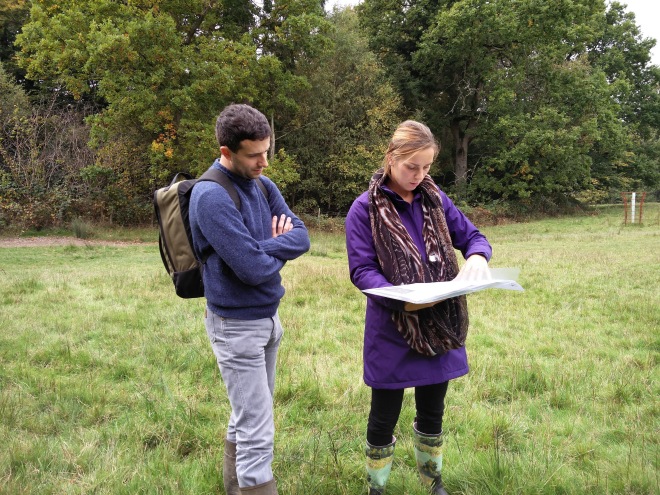From the 5th October to the 11th December it was my honour to be part of the Field Systems Project team. Not only was this was a great opportunity for me to test my Dutch skills in landscape research, it also gave me the opportunity to get to know the High Weald landscape, which I have come to admire.
During my placement, my primary task was, as a (Dutch) non-expert, to test the historic field survey method developed by Dr. Nicola Bannister. However, I was also responsible for finding out how we can improve and tailor this methodology in order to create an assessment framework which can be used by local authorities and planners when making decisions about development in the High Weald AONB.
During my second week I undertook a three day field survey at Little Scotney Farm, located on the Scotney Estate. My task was to see if the aforementioned survey forms could be easily used by a non-expert. However, before going out into the field I attempted to complete the forms as much as possible from my desk, with the aim of seeing if a wholly desk-based approach was a possible. After completing this initial investigatory stage, it was time to get out onto the ground and into the fields themselves. Despite having studied landscape history to postgraduate level in the Netherlands, completing the field survey – which involved spotting and recording all the lumps, bumps and other notable historic features – proved to be quite a challenge!  Once I had finished, all the data were entered into the geodatabase developed by the previous intern, Fred Warner.
Once I had finished, all the data were entered into the geodatabase developed by the previous intern, Fred Warner.
The next step was to conduct a complete desk-based survey for Earlye Farm. To separate the desk-based data from the field survey data, a new geodatabase was created containing only the desk-based data. Ultimately, the field based approach will be compared to the desk based approach to see whether it will be possible to conduct an entire survey from the desk thus saving time and reducing costs for future users.
In addition to the surveys, I took a trip to the archives at The Keep in Brighton to mine them for any useful information about the Earlye case study site. A chat with Earlye’s resident farmer, Bill Gingell, also turned up some really useful information – something which reminded me of the importance of oral history in providing invaluable insights that you often can’t find in a record office.
Finally, I spent several weeks working hard to develop a clear and concise flowchart setting out all the checks required to effectively assess a field’s – or group of fields’ – historic significance. After a number of long discussions with Sally, Nikki and Charles, we eventually succeeded in setting up a draft flowchart which can be used to screen out significant fields and field systems throughout the High Weald. We hope that this will help highlight historically valuable and characteristic fields, enabling them to be better conserved in the future.





